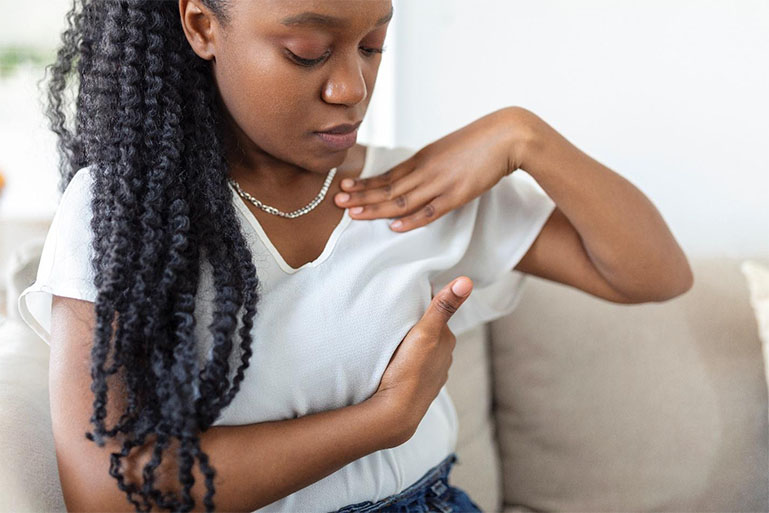Three Steps To Self-Exam Your Breast
The breast is one of the most sensitive parts of the female body. It is a defining part of the female body and requires a lot of care. Now while most women discover that they have breast lumps on their own, it would be better if you could understand how to self-examine your breast and look for warning signs on your own. Breast self-examination should be conducted at least once every month, preferably a few days before your period when your breasts are really tender.
Take Note

Even though self-examination is a way of examining and detecting lumps early, it does not stop you from engaging in routine examinations, which will help detect other possible health complications.
Step 1: Take a Good Look at Your Breasts

You see your breasts a lot, but this is far different from self-examination of your breasts. Self-examination is a deliberate examination of your breasts in front of the mirror in a bid to notice any strange changes. You need to watch out for texture changes, as well as changes in colour, shape, and size which could be a cause for concern.
Look at the edges of your breasts and notice any dimpling, bulging or wrinkling. Next, you have to examine your areola properly and nipples for any changes, including unnecessary outlooks. Finally, you have to raise your arms and examine the appearance of the breasts when you raise those arms. You can also put your arms on your shoulder and see if both breasts are levelled. Once you are done, take note of everything you have examined so far, especially the complicated ones.
Step 2: Take Time to Feel Your Breasts

Many of us do not take time to feel our breasts, but this examination will help ensure that we do so. So, put your hands on your breasts and feel for any pain or hardness. Use your fingers to move through your entire breasts and cover the entirety of the breast. For better clarity on your examination, you could examine one breast before the other where you start from the cleavage area and move in a circular manner till you get to your armpit. Then you can try to feel the inner sides of the breast, ensuring that you cover every part of the breast. If you notice anything strange, then you have to visit the hospital immediately.
Step 3: Squeeze Your Nipples for any Discharge

The next step is for you to squeeze your breasts for any form of discharge. If you are not pregnant or breastfeeding a baby, any form of discharge is to be monitored closely. You can examine the colour as well as the smell to ensure that there is no form of infection.
Bottom Line
Irrespective of whatever you find out from your breast examination, you need to stay calm. Even though you find lumps or unusual discharge from your breasts, it is not a clear sign of breast cancer. It might be due to certain hormonal changes or, for nursing mothers, clumping breast milk. If you have a family history of breast cancer, you need to visit your physician early for a proper examination so a viable solution can be found if required.


